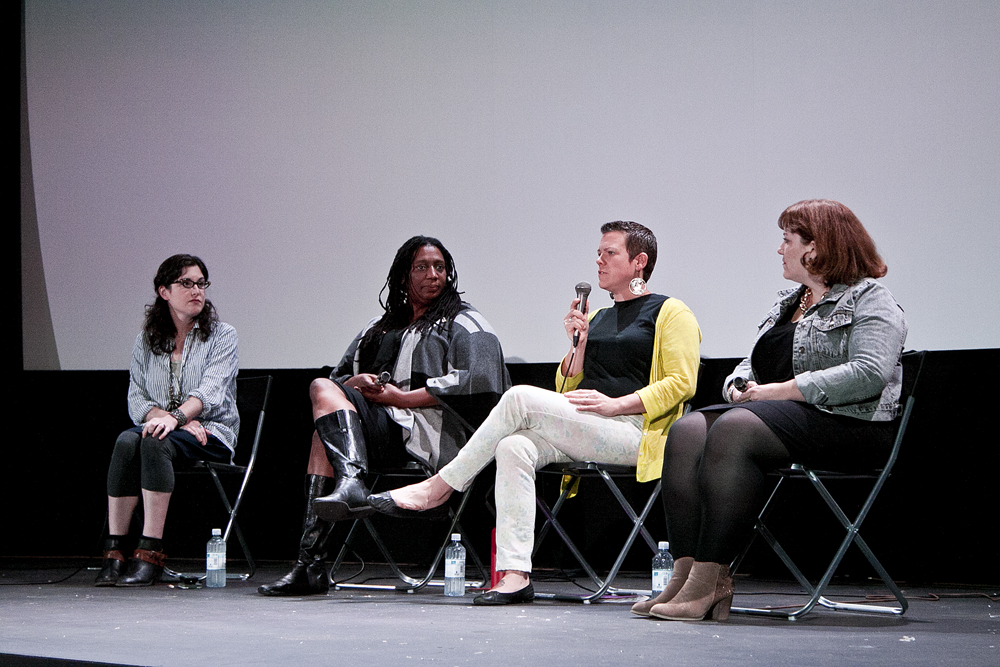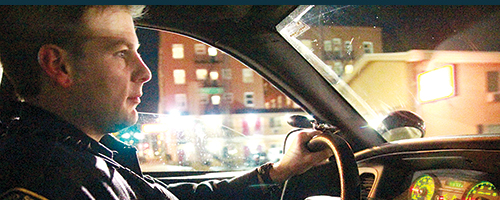One in four women experience domestic violence at some point in their lives. All too often, the outcomes are deadly. Although public awareness of domestic violence has increased in recent decades, society is still bombarded with messages in popular culture that portray acts of domestic violence as normal and often funny or romantic.
As Domestic Violence Awareness Month reached its halfway point, a local panel entitled Domestic Violence in Popular Culture examined the underlying themes of domestic violence in popular culture and the dangers that are associated with it. The event was presented by Bitch Media, a nonprofit feminist media organization that provides and encourages an engaged feminist response to mainstream media and popular culture, and Bradley Angle, a Portland-based advocacy group that aids people affected by domestic violence.
“Pop culture is a real jumping-off point to the real world discussions and provides the catalyst for having them,” said Andi Zeisler, Bitch Media co-founder, creative and editorial director, and moderator of the panel. “Being able to see [potrayals of domestic violence] on screen and identify that as problematic is the way into these discussions.”
The panel also included Christina Bondurant, a family advocate at Bradley Angle, Erin Fairchild, who works with families and communities impacted by stress and abuse, and Vanessa Timmons, a PSU alumni and instructor who is currently the executive director of the Oregon Coalition Against Domestic and Sexual Violence.
The focus of the evening was to shine a light on the many forms of domestic abuse, including physical, emotional, mental and sexual abuse. Clips from popular movies and TV shows such as Beauty and the Beast, The Honeymooners, Everybody Loves Raymond, 500 Days of Summer and Breaking Bad were shown and examined under an analytical lens.
For the panel, Beauty and the Beast is a key example of problematic gender power struggles that often occur in children’s media.
The group pointed out that despite the movie’s romantic fairy-tale theme, what exists at the heart of the story is a violent and abusive man who takes a young woman away from her home, then isolates and controls her. Despite this behavior, the movie shows that through her love she is able to “fix” him, and in the end, the two are able to live happily ever after.
“I think it is interesting that we completely overlook that the Beast is really abusive to her. From the moment he takes her dad from her and isolates her from him, to the moment he says that she can’t eat if she doesn’t eat with him. And yet, the message in the film is that she can fix him, and that she should fix him. That is a really scary message to send to young children,” Bondurant said.
“These images put both males and females in really specific boxes about what’s appropriate and what power is like,” said Timmons, who continued to point out that it is important to maintain a dialogue with children when viewing these movies to challenge the ideas that are set forth.
According to the panel, a problematic theme of popular media is the way in which domestic violence is used for laughs, particularly in many popular sitcoms and comedy shows.
While acknowledging the humor that is frequently presented in these shows, Fairchild said that these images can also serve as a “guidebook on how to have an abusive relationship.”
Fairchild continued, saying that in television shows like Everybody Loves Raymond, women are often depicted as the abusers, and the way that violence is perpetrated by the female partner is normalized and presented as funny and therefore acceptable. This, she said contrasts with the reality that most women who commit physical abuse toward men are doing so out of self-defense. The conviction rate and the penalties for female abusers are significantly higher than it is for men, Fairchild said.
The panel argued that the representation of domestic violence goes even further in popular culture, with dangerous behaviors such as stalking being presented as a romantic gesture in films like 500 Days of Summer and There’s Something About Mary. The panel discussed the ways these types of films promote the idea that a heated, passionate relationship is about the kind of behavior that includes intense fights, showing up at someone’s doorstep uninvited and refusing to leave, as well as following or spying on a partner as romantic gesture.
The reality is that when stalking is involved in the real world, the lethality rate increases dramatically, Timmons said.
“The normalization of that is scary for survivors,” Timmons said. “It takes a really long time to realize that that behavior isn’t funny, it’s really dangerous, and that folks who do stalking, it’s not a normal behavior.
“Because they look at that as humorous and normal, as someone who is out of control and falling in love can’t live without the person, it sends a really mixed message to both men and women about what’s normal and about what’s risky and what’s dangerous,” she continued.
The panel stressed the importance of maintaining education and communication on the subject of domestic violence and all the ways that it can be propagated in society, especially in popular culture. One of the most dangerous aspects of media images that normalize domestic violence, they said, is that it can lead the victim to believe that abuse is normal.
A prominent message of the night was to be aware of the messages that we are getting from our culture, which can lead unconsciously to condoning or accepting domestic violence and the behaviors that go along with it.






